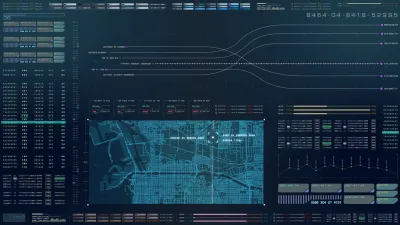Our typical images of the city often fail us. What we need is a new one that best captures the complexity and beauty of urban life.
Our images of the city contain many assumptions about its nature and its purpose. From places of innovation and cultural development, to sites of capital accumulation and resistance, or even the living sum of its people and their desires, these conceptions in practice decide who, or what, the city is for. However, the most damaging among them is perhaps the misguided vision of the city as an engineering problem—a view that drastically limits the moral and social dimensions of our communities. We need a new rendering of the city. Yet instead of a typical urbanist, it’s a Kentucky farmer that has some lessons for us all.
Popularized by Jane Jacobs in her book, The Death and Life of Great American Cities, organized complexity is the study of interrelated patterns and systems of city life. A prominent theme today in urban thinking, Jacobs’ ecological ideas oppose the modernist view of seeing the city as a reductive industrial machine whose only terms of understanding are profit and efficiency. However, Jacobs is not the only writer to champion an ecological framework.
Wendell Berry, the agrarian poet-activist, has long understood the human and natural interrelationships of the world. Berry’s rendering of human settlements in his essay, "Solving for Pattern," takes a holistic view of the natural, technological, and human interdependencies of our world. In it, Berry sharply criticizes the industrial view of agriculture that has harmed as much as helped. Berry's essay moves us away from the instrumental vocabulary of efficiency and profit and pushes us to use a moral one.
FULL STORY: Solving for Pattern: What Urbanists Can Learn from Wendell Berry

Maui's Vacation Rental Debate Turns Ugly
Verbal attacks, misinformation campaigns and fistfights plague a high-stakes debate to convert thousands of vacation rentals into long-term housing.

Planetizen Federal Action Tracker
A weekly monitor of how Trump’s orders and actions are impacting planners and planning in America.

In Urban Planning, AI Prompting Could be the New Design Thinking
Creativity has long been key to great urban design. What if we see AI as our new creative partner?

King County Supportive Housing Program Offers Hope for Unhoused Residents
The county is taking a ‘Housing First’ approach that prioritizes getting people into housing, then offering wraparound supportive services.

Researchers Use AI to Get Clearer Picture of US Housing
Analysts are using artificial intelligence to supercharge their research by allowing them to comb through data faster. Though these AI tools can be error prone, they save time and housing researchers are optimistic about the future.

Making Shared Micromobility More Inclusive
Cities and shared mobility system operators can do more to include people with disabilities in planning and operations, per a new report.
Urban Design for Planners 1: Software Tools
This six-course series explores essential urban design concepts using open source software and equips planners with the tools they need to participate fully in the urban design process.
Planning for Universal Design
Learn the tools for implementing Universal Design in planning regulations.
planning NEXT
Appalachian Highlands Housing Partners
Mpact (founded as Rail~Volution)
City of Camden Redevelopment Agency
City of Astoria
City of Portland
City of Laramie





























